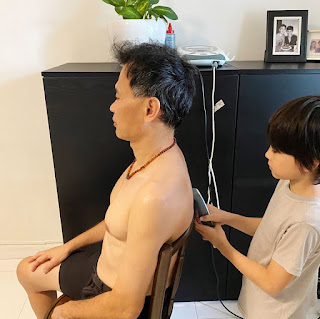This week's post is requested by one of our blog's readers who asked about the benefits of running with ankle weights. This reader started using ankle weights when Covid-19 caused gyms to close last year and thought that by strapping on ankle weights, it would be like adding
strength training while out walking or running.
Strangely enough, I've noticed a couple of ladies who run pass my home (now that I'm stuck at home mostly after my accident) with ankle or wrist weights too. I suppose once you're aware of them, you start looking out or noticing them.
Let's get into it. We shall start with the benefits first. Running with the ankle weight makes (some of) your leg muscles work harder since the extra weight makes it heavier to walk or run. Over time, (some of) your muscles get stronger. For instance, if you were running with the ankle weights, it would work your hip flexors more than your hip extensors as the former have to work harder to lift your leg off the ground to prepare for the next foot strike.
When you take the extra weight off, it makes it easier to run, you can run faster or you may find it easier to run longer distances. The heart and lungs work harder too and over time, your cardiovascular endurance improves. I found a study in 2016 which supports this (Yaacob et al, 2016).
Now for the not so good part of running with ankle weights. Your gait definitely changes when you run with them. There is now added load on your joints, especially your knees, hips, ankles and lower back. This can lead to improper or faulty technique, which may create muscle imbalances and cause injury.
What's worse is if your muscles cannot handle the extra weight, this added load gets transferred to your bones, joints and the articular cartilage. So the risk of carrying a heavier load may outweigh the potential improved performance for runners.
My take? If you have been using them and have no issues or injuries, you can probably carry on. However, if you're a new runner then I will suggest other ways to add training load to improve so as to minimize your chance of getting injured.
Would I run with ankle weights? Most probably not. The closest I came to using something similar was a weight vest. I did this way back in 2000 and 2001 when I was training for the Oxfam 100 km Trailwalker event and I used to walk (not run) up and down the steps in the spectator stands at the old National Stadium to get stronger.
Reference
Yaacob NM, Yaacob NA, Ismail AA et al (2016). Dumbbells And Ankle-wrist Weight Training Leads To Changes In Body Composition And Anthropometric Parameters With Potential Cardiovascular Disease Risk Reduction. J Taibah Uni Med Sci. 11(5): 439-447. DOI: 10.1016/j.jtumed.2016.06.005

















